Opinion & Analysis
The data behind Keegan Bradley’s coaching change
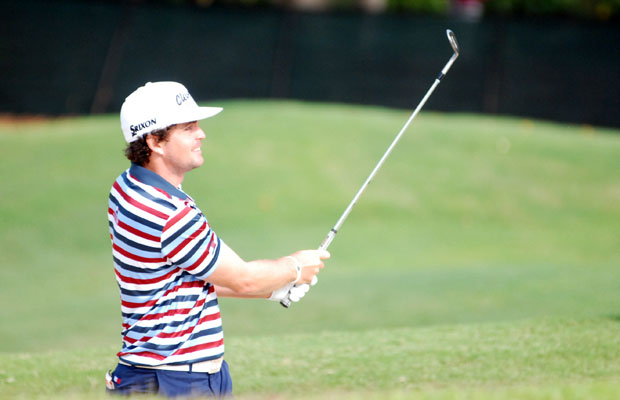
Keegan Bradley has reportedly left long-time swing coach Jim McLean for Chuck Cook, who teaches Bradley’s good friend Jason Dufner and Luke Donald. That gives Cook one of the most formidable list of clients in the golf world, as Bradley is ranked No. 20 in the Official World Golf Rankings, Dufner is ranked No. 15 and Donald is ranked No. 17.
I wanted to take a look at the numbers behind Bradley’s game and to see why he may have decided to change instructors. According to Bradley, the change was prompted by his familiarily with the instructor.
“I’ve been around Chuck Cook for a few years now, playing practice rounds with Dufner,” Bradley told Back9Network’s Ahmad Rashad. “I’m excited to get working with Chuck and get another opinion of how he thinks I can improve my golf game. He’s been around for a long time and I know he has several ways he can help me win.”
Bradley did not record a victory last season, but still finished No. 11 on the money list. When I look at a golfer’s game, I like to first analyze his or her scoring data. This helps me formulate some sort of idea of as to what went on with the golfer and provide a profile of the player’s game as far as his or her strengths and weaknesses go.
Bradley ranked No. 10 in Total Adjusted Scoring Average. Taking that into account and his rankings in the metrics in the table above, he still had a great season despite not coming away with a victory. I feel with these metrics that Bradley should be striving toward being the No. 1-ranked golfer in the world. He does not have a glaring weakness, and is instead trying to take his great game to the next level.
If Bradley is going to contend for the No. 1 spot, he will need to get inside the top 10 in Adjusted Par-4 Scoring Average. Par-4 play has the strongest correlation to Tour success of the metrics listed above. This is partially due to the number of par-4’s played per round (the Tour average is roughly 11 played per round), and the par-4’s require a more complete game to play them well. Bradley did a fine job in 2013 on the par-4’s. However, in order to contend for the No. 1 ranking in the world that will have to step up.
The biggest “weakness” we see with Bradley’s game is his play on the par-3’s. While par-3 play is important, it has the lowest correlation to success on Tour of the metrics listed. With that said, par-3 play is one part iron play, one part short game and one part long putting (putts longer than 15 feet). While Bradley was still an above-average player on the par-3’s, given that it was his weakest metric, I can start to develop an idea of what some of his issues in 2013 were.
Lastly, he had a fantastic year at avoiding bogies. Avoiding bogies has a stronger correlation to success on Tour than making birdies. He also made a high percentage of birdies. But, for him to contend for the No. 1 ranking in the world, he needs to get into the top 10 in both Birdie and Bogey rates. Furthermore, I find it a bit peculiar that the No. 1-ranked player on par-5’s ranked 24th in Birdie Rate. In all, I can start to envision a profile for Bradley’s game.
DRIVING DATA
I utilize an algorithm based on historical driving data on Tour dating back to 2007 to determine a golfer’s effectiveness off the tee. This is called Driving Effectiveness which utilizes the following metrics:
- Distance
- Fairway Percentage
- Average Distance to Edge of Fairway (on drives that miss the fairway)
- Fairway Bunker Percent
- Missed Fairway – Other Percent (shots that end up in a hazard, O.B. rescue shots, etc)
Here is Bradley’s data for 2013
As we can see, driving was rarely a problem for Bradley in 2013, as he was the second most effective driver of the ball (only Henrik Stenson was more effective). Bradley hits the ball a long way and hits a lot of fairways. And when he missed the fairway, he did not miss by much and did a fine job at avoiding fairway bunkers and other trouble. He has been one of the premier drivers on Tour since he earned his card.
PUTTING AND SHORT GAME DATA
Often times, putting and short game play can be over-valued by golfers. However, nothing can prevent a golfer from winning a tournament like poor putting. In fact, nearly 70 percent of the winners on Tour this year finished in the top 10 in Putts Gained (also called Strokes Gained-Putting) for that tournament.
Bradley putted very well in 2013 from most distances. As I have mentioned in the past, the putts from 3-to-15 feet are the most important putts to make when it comes to affecting a player’s performance versus the field. Outside of 15 feet, the make percentage for Tour players becomes very volatile. What I mean is that golfers on Tour, regardless of overall putting skill, tend to be very inconsistent when it comes to make percentage outside of 15 feet. One year they can make a lot of putts from outside 15 feet, and the next year they struggle to make those same putts.
This would explain some of the issues that Bradley had on the par-3’s. Tour players are not likely to have a lot of close birdie putts on the par-3’s, and that is why par-3 performance is dependent on the golfer’s ability to make putts outside of 15 feet. However, Bradley’s make percentage on putts outside of 15 feet is likely to progress toward the mean. Therefore, his performance on the par-3’s is likely to progress in 2014.
Sometimes the problem with good overall putters on Tour is that they were inconsistent with their putting. When they were off, they were well off. And when they were on, they were making a lot of putts. And if they putt poorly in too many tournaments, they reduce their odds of winning those events. Here’s a chart looking at Bradley’s putts gained by event.
Out of the 20 events that recorded putts gained, Bradley was only losing strokes to the field on six of those events.
Here is a look at Bradley’s short game play:
Bradley was an average short game player in 2013. But he did perform well from the most important part of the short game, longer pitch shots from 10-to-20 yards. This could also explain why he was better at avoiding bogies than making birdies. The 10-to-20 yard shots are usually more reserved for when the player needs to save par. The 1-to-10 yard shots are more makeable chip shots.
After looking at the data I see no reason why Bradley cannot contend for the No.1 spot in the world ranking based off his driving, putting and short game data. This only leaves approach shots.
APPROACH SHOT DATA
Here is Bradley’s approach shot data for 2013:
The good news is that the area that correlates strongest to success on Tour, the Danger Zone, is where Bradley was his strongest. Shorter shots, particular wedge play, are vastly overrated by the golfing community. This is why Bradley still had a fantastic year. His long game, both driving and Danger Zone play, was superb. This is where a golfer can gain the most strokes against the field over time.
Here’s a look at Bradley’s rankings from the various zones since he made the Tour:
We can see that Bradley has had issues with his iron play since he has made the Tour. His play from the Danger Zone has improved dramatically, and that has helped propel him into superstar status. But the play from the Birdie and Safe zones is what is holding him back. We also have to remember that his Safe Zone play is even worse than the ranking indicates because he was such an exceptional driver of the ball, which means he should have been in great position to hit a lot of Safe Zone shots closer to the hole.
His struggles from 75 to 175 yards would be part of the reason why he lagged a little behind on the par-3’s. It would also explain why his Birdie Rate was not better, as most birdies on the par-4’s come from Safe Zone and Birdie Zone approach shots.
All of these “issues” are nice issues for a player to have. I would expect that most of Bradley’s work with Cook will focus on improving his iron play from inside 175 yards. The key for him to take his game to the next level will be keeping his effectiveness off the tee and his skill on and around the greens while improving his iron play.
Opinion & Analysis
The 2 primary challenges golf equipment companies face

As the editor-in-chief of this website and an observer of the GolfWRX forums and other online golf equipment discourse for over a decade, I’m pretty well attuned to the grunts and grumbles of a significant portion of the golf equipment purchasing spectrum. And before you accuse me of lording above all in some digital ivory tower, I’d like to offer that I worked at golf courses (public and private) for years prior to picking up my pen, so I’m well-versed in the non-degenerate golf equipment consumers out there. I touched (green)grass (retail)!
Complaints about the ills of and related to the OEMs usually follow some version of: Product cycles are too short for real innovation, tour equipment isn’t the same as retail (which is largely not true, by the way), too much is invested in marketing and not enough in R&D, top staffer X hasn’t even put the new driver in play, so it’s obviously not superior to the previous generation, prices are too high, and on and on.
Without digging into the merits of any of these claims, which I believe are mostly red herrings, I’d like to bring into view of our rangefinder what I believe to be the two primary difficulties golf equipment companies face.
One: As Terry Koehler, back when he was the CEO of Ben Hogan, told me at the time of the Ft Worth irons launch, if you can’t regularly hit the golf ball in a coin-sized area in the middle of the face, there’s not a ton that iron technology can do for you. Now, this is less true now with respect to irons than when he said it, and is less and less true by degrees as the clubs get larger (utilities, fairways, hybrids, drivers), but there remains a great deal of golf equipment truth in that statement. Think about it — which is to say, in TL;DR fashion, get lessons from a qualified instructor who will teach you about the fundamentals of repeatable impact and how the golf swing works, not just offer band-aid fixes. If you can’t repeatably deliver the golf club to the golf ball in something resembling the manner it was designed for, how can you expect to be getting the most out of the club — put another way, the maximum value from your investment?
Similarly, game improvement equipment can only improve your game if you game it. In other words, get fit for the clubs you ought to be playing rather than filling the bag with the ones you wish you could hit or used to be able to hit. Of course, don’t do this if you don’t care about performance and just want to hit a forged blade while playing off an 18 handicap. That’s absolutely fine. There were plenty of members in clubs back in the day playing Hogan Apex or Mizuno MP-32 irons who had no business doing so from a ballstriking standpoint, but they enjoyed their look, feel, and complementary qualities to their Gatsby hats and cashmere sweaters. Do what brings you a measure of joy in this maddening game.
Now, the second issue. This is not a plea for non-conforming equipment; rather, it is a statement of fact. USGA/R&A limits on every facet of golf equipment are detrimental to golf equipment manufacturers. Sure, you know this, but do you think about it as it applies to almost every element of equipment? A 500cc driver would be inherently more forgiving than a 460cc, as one with a COR measurement in excess of 0.83. 50-inch shafts. Box grooves. And on and on.
Would fewer regulations be objectively bad for the game? Would this erode its soul? Fortunately, that’s beside the point of this exercise, which is merely to point out the facts. The fact, in this case, is that equipment restrictions and regulations are the slaughterbench of an abundance of innovation in the golf equipment space. Is this for the best? Well, now I’ve asked the question twice and might as well give a partial response, I guess my answer to that would be, “It depends on what type of golf you’re playing and who you’re playing it with.”
For my part, I don’t mind embarrassing myself with vintage blades and persimmons chasing after the quasi-spiritual elevation of a well-struck shot, but that’s just me. Plenty of folks don’t give a damn if their grooves are conforming. Plenty of folks think the folks in Liberty Corner ought to add a prison to the museum for such offences. And those are just a few of the considerations for the amateur game — which doesn’t get inside the gallery ropes of the pro game…
Different strokes in the game of golf, in my humble opinion.
Anyway, I believe equipment company engineers are genuinely trying to build better equipment year over year. The marketing departments are trying to find ways to make this equipment appeal to the broadest segment of the golf market possible. All of this against (1) the backdrop of — at least for now — firm product cycles. And golfers who, with their ~15 average handicap (men), for the most part, are not striping the golf ball like Tiger in his prime and seem to have less and less time year over year to practice and improve. (2) Regulations that massively restrict what they’re able to do…
That’s the landscape as I see it and the real headwinds for golf equipment companies. No doubt, there’s more I haven’t considered, but I think the previous is a better — and better faith — point of departure when formulating any serious commentary on the golf equipment world than some of the more cynical and conspiratorial takes I hear.
Agree? Disagree? Think I’m worthy of an Adam Hadwin-esque security guard tackle? Let me know in the comments.
@golfoncbs The infamous Adam Hadwin tackle ? #golf #fyp #canada #pgatour #adamhadwin ? Ghibli-style nostalgic waltz – MaSssuguMusic
Podcasts
Fore Love of Golf: Introducing a new club concept

Episode #16 brings us Cliff McKinney. Cliff is the founder of Old Charlie Golf Club, a new club, and concept, to be built in the Florida panhandle. The model is quite interesting and aims to make great, private golf more affordable. We hope you enjoy the show!
Opinion & Analysis
On Scottie Scheffler wondering ‘What’s the point of winning?’

Last week, I came across a reel from BBC Sport on Instagram featuring Scottie Scheffler speaking to the media ahead of The Open at Royal Portrush. In it, he shared that he often wonders what the point is of wanting to win tournaments so badly — especially when he knows, deep down, that it doesn’t lead to a truly fulfilling life.
View this post on Instagram
“Is it great to be able to win tournaments and to accomplish the things I have in the game of golf? Yeah, it brings tears to my eyes just to think about it because I’ve literally worked my entire life to be good at this sport,” Scheffler said. “To have that kind of sense of accomplishment, I think, is a pretty cool feeling. To get to live out your dreams is very special, but at the end of the day, I’m not out here to inspire the next generation of golfers. I’m not out here to inspire someone to be the best player in the world, because what’s the point?”
Ironically — or perhaps perfectly — he went on to win the claret jug.
That question — what’s the point of winning? — cuts straight to the heart of the human journey.
As someone who’s spent over two decades in the trenches of professional golf, and in deep study of the mental, emotional, and spiritual dimensions of the game, I see Scottie’s inner conflict as a sign of soul evolution in motion.
I came to golf late. I wasn’t a junior standout or college All-American. At 27, I left a steady corporate job to see if I could be on the PGA Tour starting as a 14-handicap, average-length hitter. Over the years, my journey has been defined less by trophies and more by the relentless effort to navigate the deeply inequitable and gated system of professional golf — an effort that ultimately turned inward and helped me evolve as both a golfer and a person.
One perspective that helped me make sense of this inner dissonance around competition and our culture’s tendency to overvalue winning is the idea of soul evolution.
The University of Virginia’s Division of Perceptual Studies has done extensive research on reincarnation, and Netflix’s Surviving Death (Episode 6) explores the topic, too. Whether you take it literally or metaphorically, the idea that we’re on a long arc of growth — from beginner to sage elder — offers a profound perspective.
If you accept the premise literally, then terms like “young soul” and “old soul” start to hold meaning. However, even if we set the word “soul” aside, it’s easy to see that different levels of life experience produce different worldviews.
Newer souls — or people in earlier stages of their development — may be curious and kind but still lack discernment or depth. There is a naivety, and they don’t yet question as deeply, tending to see things in black and white, partly because certainty feels safer than confronting the unknown.
As we gain more experience, we begin to experiment. We test limits. We chase extreme external goals — sometimes at the expense of health, relationships, or inner peace — still operating from hunger, ambition, and the fragility of the ego.
It’s a necessary stage, but often a turbulent and unfulfilling one.
David Duval fell off the map after reaching World No. 1. Bubba Watson had his own “Is this it?” moment with his caddie, Ted Scott, after winning the Masters.
In Aaron Rodgers: Enigma, reflecting on his 2011 Super Bowl win, Rodgers said:
“Now I’ve accomplished the only thing that I really, really wanted to do in my life. Now what? I was like, ‘Did I aim at the wrong thing? Did I spend too much time thinking about stuff that ultimately doesn’t give you true happiness?’”
Jim Carrey once said, “I think everybody should get rich and famous and do everything they ever dreamed of so they can see that it’s not the answer.”
Eventually, though, something shifts.
We begin to see in shades of gray. Winning, dominating, accumulating—these pursuits lose their shine. The rewards feel more fleeting. Living in a constant state of fight-or-flight makes us feel alive, yes, but not happy and joyful.
Compassion begins to replace ambition. Love, presence, and gratitude become more fulfilling than status, profits, or trophies. We crave balance over burnout. Collaboration over competition. Meaning over metrics.
Interestingly, if we zoom out, we can apply this same model to nations and cultures. Countries, like people, have a collective “soul stage” made up of the individuals within them.
Take the United States, for example. I’d place it as a mid-level soul: highly competitive and deeply driven, but still learning emotional maturity. Still uncomfortable with nuance. Still believing that more is always better. Despite its global wins, the U.S. currently ranks just 23rd in happiness (as of 2025). You might liken it to a gifted teenager—bold, eager, and ambitious, but angsty and still figuring out how to live well and in balance. As much as a parent wants to protect their child, sometimes the child has to make their own mistakes to truly grow.
So when Scottie Scheffler wonders what the point of winning is, I don’t see someone losing strength.
I see someone evolving.
He’s beginning to look beyond the leaderboard. Beyond metrics of success that carry a lower vibration. And yet, in a poetic twist, Scheffler did go on to win The Open. But that only reinforces the point: even at the pinnacle, the question remains. And if more of us in the golf and sports world — and in U.S. culture at large — started asking similar questions, we might discover that the more meaningful trophy isn’t about accumulating or beating others at all costs.
It’s about awakening and evolving to something more than winning could ever promise.









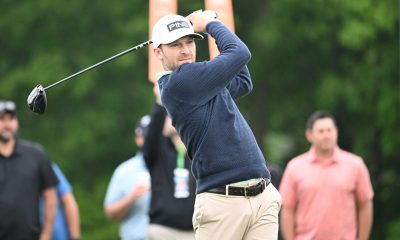

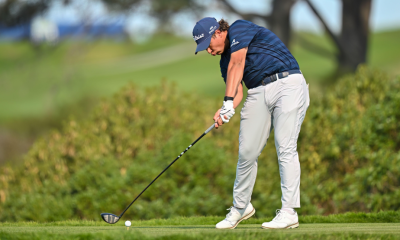

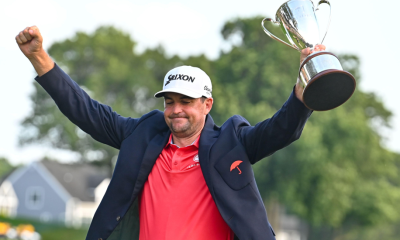



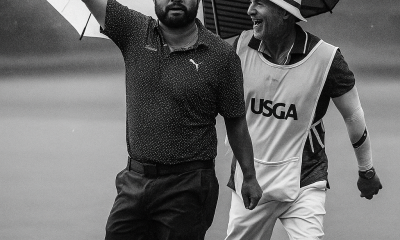

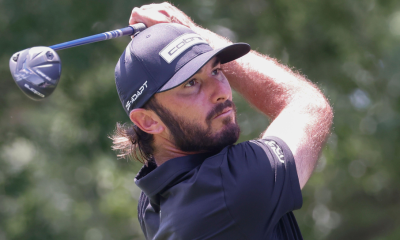









LY
Jan 1, 2014 at 12:12 pm
Rich:
What a great article! Do you do stat work with the LPGA tour and if so how do their numbers compare to the PGA tour?
LiveWire
Dec 30, 2013 at 5:28 pm
Great Data, I hope KB does better in 2014. I think he does a great job on the course. He has staying power for years to come. Hopefully he’ll win again before the Bo Sox do……
bsoudi
Dec 30, 2013 at 2:59 pm
Interesting analysis. Though it triggers 2 thoughts with me:
1) How important is the “standard deviation” of these stats? I guess I picture that as his consistency.
2) Could insight be gleaned from a comparison of all these attributes – say, could you see that on a great day driving, a player’s putting could be crap, etc.? That way players can get insights to get “all the pieces in place” more often?
Jadon
Dec 30, 2013 at 10:43 am
Wow, very interesting read. I’d like to see the same stats on Zach Johnson, a guy who is on the opposite end of the spectrum; doesn’t hit it a mile but relies on his wedges and short irons to “score” and get the job done. Goes to show you that you don’t have to be a bomber to succeed, what an odd and fun game we play.
Richie Hunt
Dec 30, 2013 at 11:11 am
Jadon, you would be shocked at how Zach got it done this year. He doesn’t hit it long, but his long approach shots (Danger Zone) is where he hit it the best from.
Mark Wells
Dec 30, 2013 at 1:57 am
Wonder why he feels he can’t work on the birdie and safe zone improvement with McClean? Solid and showing improvement otherwise. Time will tell
naflack
Dec 29, 2013 at 10:37 pm
i can see that little move off the ball that keegan does with his head being an issue on those short iron shots. im guessing chuck will want to address that…
Troy Vayanos
Dec 29, 2013 at 5:04 pm
Great post Rich,
Just shows how tough the tour is these days when a guy like Keegan can produce such impressive stats and still not come away with a victory.
Cheers
Richie Hunt
Dec 30, 2013 at 11:12 am
The bigger one is to look at Bo Van Pelt’s metrics from 2012. Outstanding ballstriker and was 11th in Putts Gained. Didn’t record 1 win. I almost found that impossible, but any given week somebody can sneak in and take it away from him.
Juan
Dec 29, 2013 at 12:11 pm
Rich, I really appreciate the great work you do with statistics!! It helps me understand the players you analyze AND a way of thinking about analyzing and improving my own game. BTW, I really like your website. THANKS again for the great work!!
Mike
Dec 29, 2013 at 11:26 am
Rich, great work. I love seeing data like this and a good thorough analysis. I look forward to reading more of your work.
Martin
Dec 29, 2013 at 9:45 am
Cool analysis, I also wonder what will happen when he switches putters.
I played with the same putter Keegan uses and gave it up because it wasn’t good enough on long putts to make up for the bit better it was on short ones. The stats seem to make the same case for Keegan.
Rob
Dec 29, 2013 at 8:16 am
Rich, interesting article, well done. I’m curious if anyone has studied “feel players” that use statistics heavily to engineer changes and what the results have been.
Rich
Dec 30, 2013 at 3:53 am
Could you really classify them as a true feel player if they looked at stats?
Rich
Dec 29, 2013 at 7:34 am
Yes I’m sure Keegan Bradley took all this into consideration when he decided to switch coaches. Actually, perhaps he’s not aware. You should drop him a line to let him know……..
Pingback: Desde el tee: semana 52/2013 | colombiaDeportes.co
Kenny Thomson
Dec 29, 2013 at 5:28 am
Another good article. How does an amateur collect such data without slowing up play? Enjoyed the book.
Kenny Thomson
Dec 29, 2013 at 5:26 am
Good article, but how does an amateur ( reasonably low handicap) capture similar data without slowing up play?
Enjoyed your book
Id
Dec 29, 2013 at 2:55 am
No glaring weakness??? What’s he going to do when he has to quit the belly putter?
Trey Hayden
Dec 29, 2013 at 5:02 am
It’s impossible to predict the future, but Bradley did win most of his college tournaments with a short putter. He switched for the same reason most guys in his generation switched: If they’re gonna let us cheat, we shall cheat.
Rob
Dec 29, 2013 at 8:05 am
You should understand the rules before making stupid comments, He doesn’t have to “quit the belly putter”
Id
Dec 29, 2013 at 10:35 am
He has to quit anchoring into the belly, therefore he has to quit that stroke. He can keep the same length putter, for sure, and use it un-anchored, therefore not calling it a non-belly putter but a putter at 43 inches or whatever – but he has to quit the belly putter. You should understand the comments before trying to sound intelligent.
Richie Hunt
Dec 30, 2013 at 11:14 am
I think I didn’t clarify what I meant by ‘glaring weakness’ anyway. What I meant is when you look at his *scoring* data (par-3’s, par-4’s, par-5’s, bogey rate and birdie rate) there was no glaring weakness there. Obviously he has a glaring weakness in his game…shots from inside 175 yards. As far as the putter goes, we will wait and see how that pans outs.
Sean
Dec 28, 2013 at 9:22 pm
Nice analysis. That right there should tell KB what he needs to work on.
Tom Stickney
Dec 28, 2013 at 7:04 pm
Great analysis Rich. Big fan of your work!
A
Dec 28, 2013 at 5:59 pm
I knew he was an idiot the moment I saw him
Homer Simpson
Dec 28, 2013 at 4:23 pm
“Facts are stubborn things, but statistics are more pliable.”
? Mark Twain
Roger
Dec 28, 2013 at 1:35 pm
Rich, thanks for another Great Article.
I see Luke Donald also moved to Chuck Cook due to his wish to
hit more par 4’s . Did a search of online videos of Chuck Cook
so thanks for the Xmas Present! I’m still young enough to Listen!
From 185 to the Pin is my problem area!
Have a great 2013 Rich.
Richie Hunt
Dec 28, 2013 at 8:46 pm
Thanks for the kind words